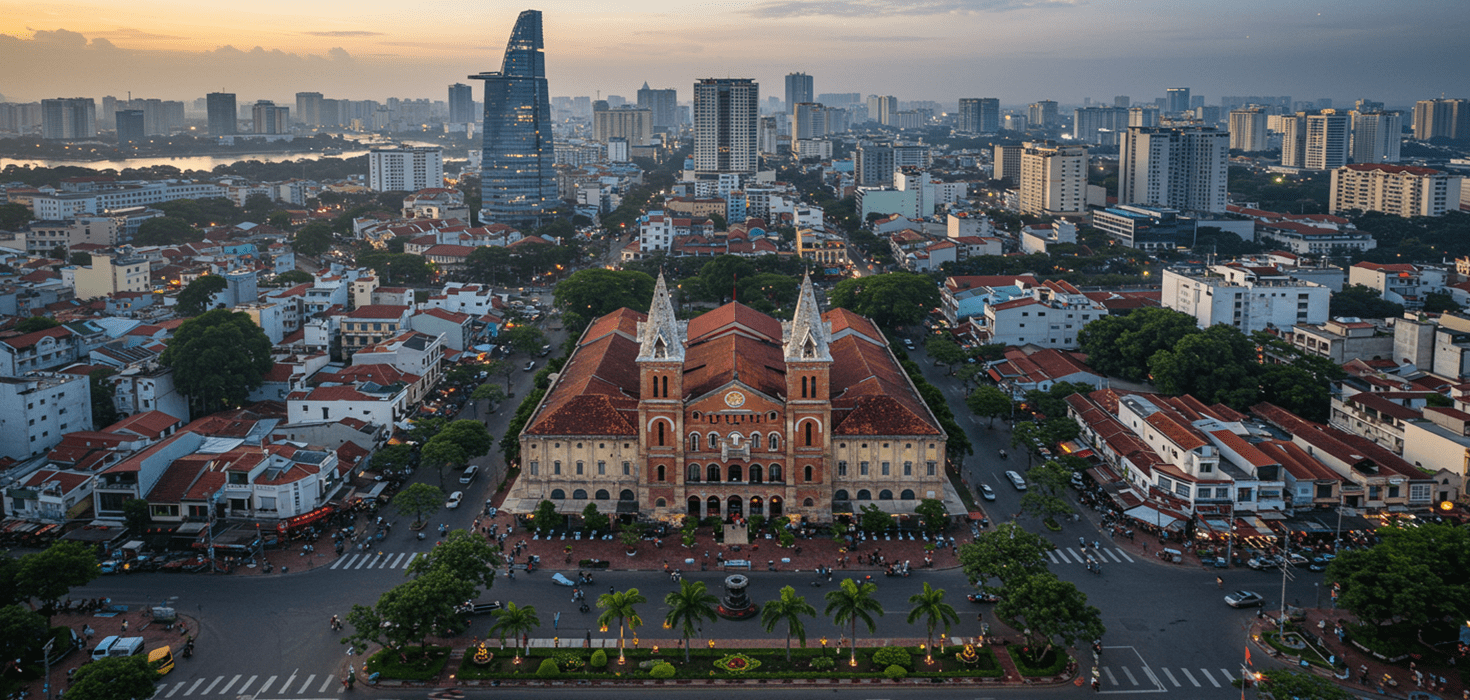Introduction
Bali, the Island of the Gods, is an enchanting destination that captivates travelers with its stunning landscapes, rich culture, and warm hospitality. From lush rice terraces and pristine beaches to vibrant temples and lively markets, Bali is a feast for the senses. But before you pack your bags and book that flight, it’s vital to grasp the island’s weather patterns. Understanding Bali’s climate will help you plan the perfect getaway, ensuring you experience the sun, surf, and serenity that this tropical paradise has to offer.
Bali Weather Year-Round: A Tropical Paradise Awaits
Bali enjoys a tropical climate characterized by two main seasons: the dry season and the wet season. The dry season typically runs from April to October, offering plenty of sunshine and lower humidity levels. During this time, temperatures hover around 27°C to 32°C (81°F to 90°F), making it ideal for outdoor adventures and beach lounging.
In contrast, the wet season spans from November to March, bringing higher humidity and rainfall. Average temperatures remain warm, ranging from 26°C to 31°C (79°F to 88°F), but the occasional downpour can cool things off. Despite the rain, Bali’s lush landscapes flourish, and the island’s vibrant culture continues to thrive.
Whether you’re seeking sun-soaked days or lush greenery, Bali’s weather year-round offers something for every traveler. Check out our Bali Climate Guide for a comprehensive overview of what to expect throughout the year!
Exploring Bali’s Seasonal Weather Patterns
Let’s break down Bali’s seasonal weather patterns so you can make the most of your trip. Knowing the temperature variations and rainfall statistics can help you plan activities that align with the weather.
Dry Season (April to October): Characteristics and Activities
The dry season is Bali’s peak travel time, attracting sun-seekers from around the globe. With plenty of sunshine and minimal rainfall, this is the perfect season for beach activities, hiking, and exploring the island’s cultural treasures. Popular spots like Ubud, Seminyak, and Canggu buzz with life, hosting exciting events and vibrant nightlife.
During these months, the average humidity levels drop, making it comfortable to wander through rice paddies or lounge by the beach. Whether you’re catching waves in Kuta or enjoying a sunset at Uluwatu Temple, the dry season offers endless opportunities for adventure.
Wet Season (November to March): Rainfall Patterns and Cultural Significance
As the wet season rolls in, expect Bali’s landscape to transform into a lush, green paradise. While the rain can be more frequent, it often comes in short bursts, leaving plenty of time for exploration. This season is perfect for immersing yourself in Bali’s rich culture and enjoying fewer crowds at popular attractions.
Festivals like Galungan and Kuningan take place during this time, showcasing Bali’s vibrant traditions. Plus, the rain brings cooler temperatures, making it an excellent time for wellness retreats and spa days. Embrace the unique charm of Bali’s rainy season and discover hidden gems that many travelers overlook!
For detailed temperature and rainfall data, check out our Bali Weather Overview. It’s packed with insights to help you plan your adventure!
The Best Time to Visit Bali: Timing Your Adventure
So, when is the best time to visit Bali? The answer depends on your travel preferences and the experiences you’re seeking. If you’re after sun-soaked days and beach parties, the dry season is your best bet. However, if you prefer a more tranquil experience with fewer tourists, consider visiting during the wet season.
Peak Season vs. Off-Peak: Pros and Cons
The peak season, from July to August, sees a surge of tourists, which means bustling beaches and lively nightlife. While this is the time for sun and surf, it can also mean higher prices and crowded attractions. If you don’t mind the hustle and bustle, this is a fantastic time to soak up the vibrant atmosphere!
On the flip side, the off-peak months of November to March offer a quieter experience. Prices for accommodation and activities tend to drop, making it a budget-friendly option. Just be prepared for the occasional rain shower, which can actually be refreshing!
Shoulder Months: Benefits of Visiting During April, May, June, and September
April, May, June, and September are considered shoulder months, offering a sweet spot between peak and off-peak seasons. During these months, you’ll find pleasant weather, fewer crowds, and often better deals on accommodations. It’s an excellent time for outdoor activities like hiking Mount Batur or exploring the beautiful beaches without the summer rush.
These months also host various local events and festivals, providing a chance to experience Bali’s culture up close. So, if you’re looking for a balance between adventure and relaxation, these shoulder months might just be your ideal time to visit!
Bali’s Surf Conditions: Riding the Waves
Surf’s up in Bali! Known for its world-class surf spots, this island is a haven for both seasoned surfers and beginners looking to catch their first wave. The surf conditions vary throughout the year, influenced by the island’s weather patterns. Whether you’re a pro or just starting out, there’s a wave waiting for you!
Surfing Hotspots: Uluwatu, Padang Padang, Kuta
Let’s talk about the stars of the show! Uluwatu is famous for its powerful reef breaks that attract surfers from all over the globe. The stunning cliffs and crystal-clear waters make it a picture-perfect spot for both surfing and soaking in the views. Don’t forget to catch the sunset at Uluwatu Temple after your surf session—it’s a magical experience!
Next up, Padang Padang, a favorite among both locals and tourists. This beach offers waves that cater to all skill levels, making it a fantastic spot for beginners and advanced surfers alike. The vibe here is laid-back, with plenty of cafes to refuel after an epic day on the water.
And of course, we can’t forget Kuta! Known for its long, rolling waves, Kuta Beach is a great place for beginners to learn the ropes. With surf schools lining the beach, you’ll have no shortage of options to get started. Plus, the nightlife in Kuta is buzzing, so you can celebrate your surfing triumphs after a day in the sun!
Best Months for Surf Conditions and Local Surf Competitions
The best time to catch those perfect waves depends on where you are on the island. For the west coast, including Kuta and Seminyak, the dry season from April to October offers the most consistent surf conditions. The waves are bigger and more powerful during this time, attracting surf competitions that highlight the skills of the best surfers.
If you find yourself on the east coast, such as at Nusa Dua, the surf is best from November to March. This is when the winds shift, creating ideal conditions for more experienced surfers. Keep an eye on the local surf calendar, as there are often competitions during this season too, showcasing both local talent and international surfers.
Whether you’re riding the waves or just watching from the beach, Bali’s surf scene is a must-experience. Grab your board, and ride the waves of this tropical paradise!
Outdoor Activities by Season: Adventures Await
No matter the season, Bali is bursting with outdoor activities that cater to every adventurer’s taste! From hiking to water sports, the island offers a plethora of options that will make your trip unforgettable.
Dry Season Adventures: Hiking, Beach Activities, and More
During the dry season, the sun shines bright, making it perfect for outdoor escapades. One of the top adventures is hiking Mount Batur, where you can witness a breathtaking sunrise from the summit. The trek is moderately challenging, but the views are worth every step! Don’t forget to pack a camera—this is a moment you’ll want to capture!
Beach lovers will rejoice during this time, as the clear skies and warm waters create ideal conditions for swimming, sunbathing, and beach games. Head to Nusa Dua for luxurious beach resorts or to Seminyak for trendy beach clubs. The options are endless!
Water sports enthusiasts can indulge in activities like snorkeling, scuba diving, and jet skiing. The reefs surrounding Bali are teeming with colorful marine life, making it a diver’s paradise. Book a snorkeling tour to spots like Menjangan Island or the famous Blue Lagoon in Padang Bai for an unforgettable underwater experience.
Wet Season Activities: Snorkeling, Cultural Exploration, and Wellness Retreats
As the rain arrives, Bali transforms into a lush green paradise, making it an excellent time for cultural exploration and wellness retreats. The rain typically comes in short bursts, leaving plenty of time for adventures in between. Visit the stunning temples like Tanah Lot or Besakih, the Mother Temple of Bali, where you can soak in the island’s rich culture and history.
This season is also perfect for wellness retreats. Many resorts and spas offer special packages focusing on relaxation and rejuvenation. Treat yourself to a traditional Balinese massage or participate in yoga sessions surrounded by nature. The tranquil atmosphere during the wet season enhances the experience, allowing you to unwind completely.
Don’t forget about the vibrant local markets! Explore Ubud’s art market, where you can find unique souvenirs and handmade crafts. The wet season brings fewer tourists, so you can enjoy a more authentic shopping experience without the crowds.
Whether you’re hiking, surfing, or indulging in wellness, Bali’s outdoor activities cater to every traveler’s desires. Embrace the adventure, and make memories that will last a lifetime!
Festivals and Events: Celebrating Bali’s Culture
One of the most enchanting aspects of Bali is its rich cultural tapestry, woven with vibrant festivals and events throughout the year. These celebrations are a great way to experience the island’s traditions, and they often coincide with the changing seasons!
Nyepi Day: The Day of Silence
Mark your calendars for Nyepi Day, the Balinese New Year, celebrated in March. This unique festival is a day of silence, fasting, and meditation. The island comes to a standstill, with no flights, no traffic, and no noise allowed. It’s a time for reflection and renewal, making it a powerful experience for those who are lucky enough to witness it.
Before Nyepi, you’ll see vibrant processions and colorful Ogoh-Ogoh (demonic effigies) paraded through the streets, symbolizing the expulsion of negative energies. Watching these festivities is an incredible way to immerse yourself in Balinese culture.
Bali Arts Festival: Celebrating Local Culture and Traditions
Another highlight is the Bali Arts Festival, held from June to July. This month-long celebration showcases Balinese music, dance, and art, featuring performances from local artists and groups. The festival takes place in Denpasar, where you can enjoy traditional dances, art exhibitions, and food stalls offering delicious local cuisine.
Participating in these festivals allows you to connect with the local community and appreciate the island’s rich heritage. Whether you’re dancing in the streets or savoring traditional dishes, these events create unforgettable memories.
Culinary Deep Dive: Taste the Seasons of Bali
Get ready to tantalize your taste buds! Bali’s culinary scene is as diverse as its landscape, with an array of flavors and ingredients that reflect the island’s culture and seasonal bounty.
Must-Try Local Dishes and Where to Find Them
When in Bali, you can’t miss trying Nasi Goreng, a delicious fried rice dish that’s a staple in Indonesian cuisine. For a unique twist, head to Warung Babi Guling for their famous Suckling Pig, a dish that’s a must-try for meat lovers!
Vegetarians will love Gado-Gado, a fresh salad made with steamed vegetables, tofu, and peanut sauce. You can find this delightful dish almost everywhere, but local warungs often serve the best versions. Pair your meal with a refreshing young coconut for the ultimate Bali experience!
Seasonal Dining Experiences and Food Festivals
Food festivals pop up throughout the year, celebrating Bali’s culinary heritage. One of the most exciting is the Ubud Food Festival, held in April. This event brings together chefs, food enthusiasts, and locals to showcase the best of Indonesian cuisine. Join cooking classes, watch culinary demonstrations, and indulge in mouthwatering dishes from various regions of Indonesia.
Dining in Bali is not just about the food—it’s about the experience! Many restaurants offer stunning views of rice paddies or the ocean, creating a perfect backdrop for your meal. Don’t forget to explore traditional markets, where you can sample street food and discover local delicacies.
Practical Information for Travelers: Tips and Essentials
Before you pack your bags and jet off to Bali, here are some handy tips to ensure a smooth and enjoyable trip!
Seasonal Packing Tips: What to Bring for Each Season
When visiting during the dry season, lightweight clothing, sunscreen, and a good pair of sandals are essential. Don’t forget a hat and sunglasses to shield yourself from the sun! If you’re planning to hike, sturdy shoes are a must.
For the wet season, pack a light rain jacket and quick-dry clothing. An umbrella can also come in handy for those unexpected showers. Waterproof bags will protect your belongings during outdoor activities.
Health and Safety Guidelines: Staying Safe and Healthy in Bali’s Climate
Staying hydrated is key, especially during the hot dry season. Drink plenty of water, and consider packing a refillable water bottle to minimize plastic waste. Be cautious with street food if you have a sensitive stomach, and always opt for freshly cooked meals.
Don’t forget to apply mosquito repellent, particularly during the wet season, to avoid pesky bites. Bali is generally safe, but it’s wise to keep an eye on your belongings, especially in crowded areas.
Transportation in Bali: Getting Around the Island
Getting around Bali is easy and can be part of the adventure! There are several options available, depending on your comfort level and budget.
Renting Scooters vs. Using Taxis and Ride-Sharing Services
For the adventurous, renting a scooter is a popular choice. It gives you the freedom to explore at your own pace, but always wear a helmet and be cautious on the roads! If you’re not comfortable riding, taxis and ride-sharing services like Grab are widely available and affordable.
Best Times for Travel to Avoid Traffic and Maximize Sightseeing
Traffic can get heavy, especially in tourist hotspots like Seminyak and Kuta. To avoid the rush, plan your outings early in the morning or later in the evening. This way, you can enjoy the sights without the stress of being stuck in traffic!
Sustainability and Conservation: Protecting Bali’s Natural Beauty
Bali’s natural beauty is breathtaking, and it’s essential to protect it for future generations. Eco-tourism is on the rise, and many travelers are looking for ways to enjoy the island responsibly.
How to Enjoy Bali’s Natural Beauty Responsibly
When visiting beaches and natural sites, always follow the "leave no trace" principle. Bring your trash back with you and avoid single-use plastics. Consider choosing eco-friendly accommodations that prioritize sustainability and support local communities.
Local Conservation Efforts and How Travelers Can Contribute
Get involved in local conservation efforts by participating in beach clean-ups or visiting eco-friendly farms. Many organizations welcome volunteers, and it’s a great way to give back to the community while enjoying your vacation!
Frequently Asked Questions (FAQs) About Bali Weather
As you plan your trip, you might have some questions about Bali’s weather and activities. Here are a few commonly asked questions to help you out!
What is the best time to visit Bali for specific activities?
If you’re looking to surf, the dry season is ideal for west coast beaches, while the wet season is perfect for the east coast. For hiking, early morning treks during the dry season offer the best views and cooler temperatures.
How does the weather affect outdoor adventures?
The weather plays a significant role in your outdoor plans. The dry season is perfect for beach activities and hiking, while the wet season is great for cultural experiences and wellness retreats. Always check the forecast before heading out!
Fun Facts About Bali’s Weather and Culture
Did you know that Bali has its own unique microclimates? Depending on where you are on the island, you might experience different weather conditions. For example, Ubud can be significantly cooler and wetter than the beaches in the south!
Additionally, the island is home to a variety of customs and traditions that are deeply connected to its weather patterns. Many ceremonies are timed with the rainy season to ensure a bountiful harvest, showcasing how the Balinese people live in harmony with nature.
With its stunning scenery, rich culture, and welcoming locals, Bali is a destination that promises adventure and relaxation. By understanding the island’s weather and seasonal activities, you’re set for an unforgettable experience. So pack your bags, grab your surfboard, and get ready to create memories that will last a lifetime!










